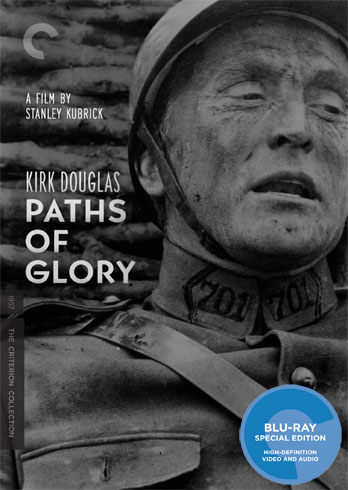I have an aversion to classic American black and white war movies. They've just never been my thing. As far as war movies go, I personally think the conflict in Vietnam produced much more interesting cinema. I've been throttled by films like Apocalypse Now and The Deer Hunter. They're films that stand the test of time and never let up in intensity. They are as eye opening today as the first time you saw them decades ago.
Due to my own bias, I wasn't prepared to think that Paths of Glory, a film about the French in the first World War, would also be something I'd consider as "eye opening today" as it was when it was made. But it isn't a typical war film. It's older, sure, and in black and white, but it's issues aren't the kind you can divide into neat little categories. It's a film that rides a gray area dealing with backsliding personnel from your own unit, conflicts inside the team you're already on - and whether we ignore, confront or support a team member's actions when he is clearly making an immoral choice. These ideas get internalized toward the end of the film, too, showing a roomful of soldiers drinking and laughing it up in a barroom scene that brings the horror of war closer to home. The film goes from wondering about the other men you're fighting alongside to wondering about the fight within yourself.
Paths of Glory is the true story of three men unjustly accused of mutiny by retreating from battle, a battle their superiors knew they'd lose but planned anyway. The film's depiction of history got it banned, not playing in France until nearly eighteen years after it was made.
The use of long tracking shots in Paths of Glory is masterful, especially in the trenches before the major battle scene, and in the battle itself. As a camera travels right to left and the soldiers try to advance, we're in the thick of it with them, right there in the battle with explosions and bodies piling up all over the battlefield. Later, a final march toward a firing squad is also masterfully done in a long tracking shot, the men moving toward a backward moving camera, the same technique used in the beginning in the trenches.
The cinematography in Paths of Glory is as astounding as the story. The two combined made a believer out of me. It's another example of a fine film I've been introduced to because of the A&F Top 100.
Of course, Kubrick's later war story, which I also sat down to watch for the first time in over a decade, I kinda still like, too:
Full Metal Jacket. (1987) Stanley Kubrick




No comments:
Post a Comment
I like to respond to comments. If you keep it relatively clean and respectful, and use your name or any name outside of "Anonymous," I will be much more apt to respond. Spam or stupidity is mine to delete at will. Thanks.